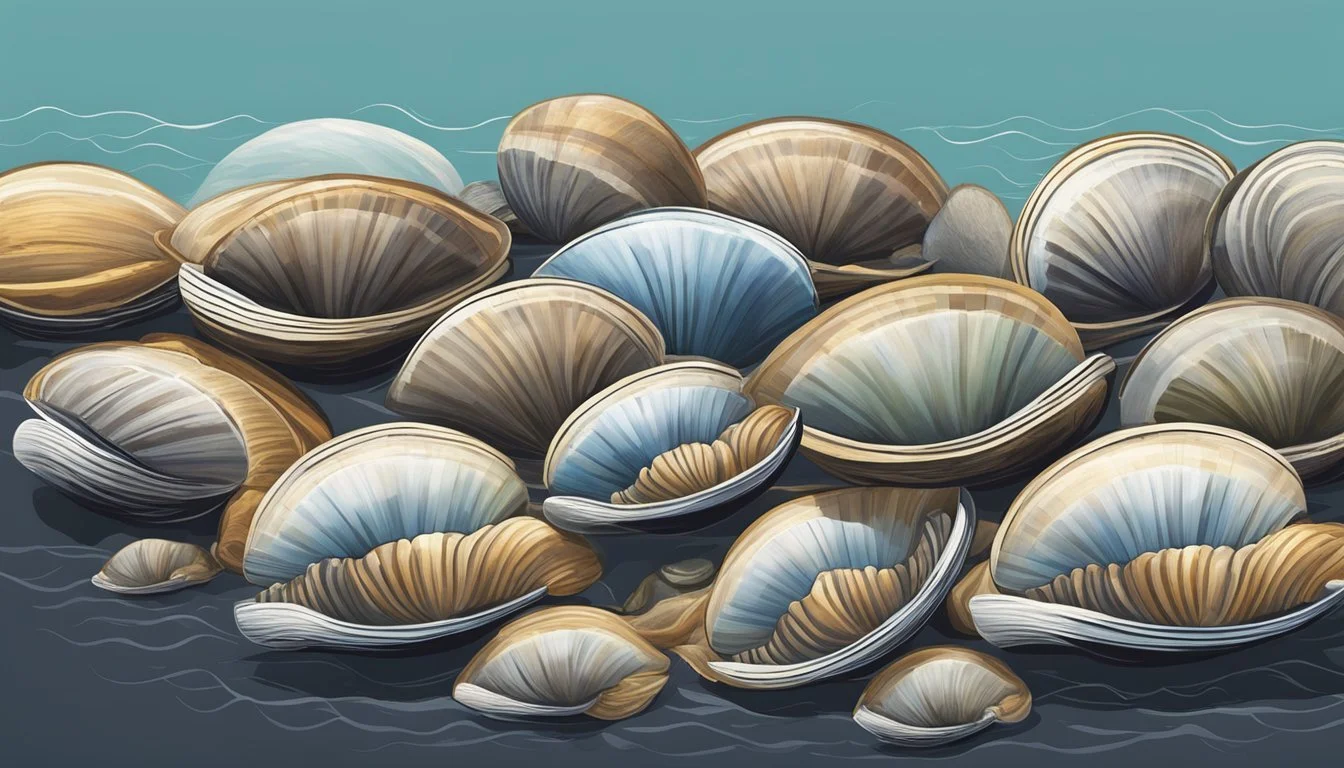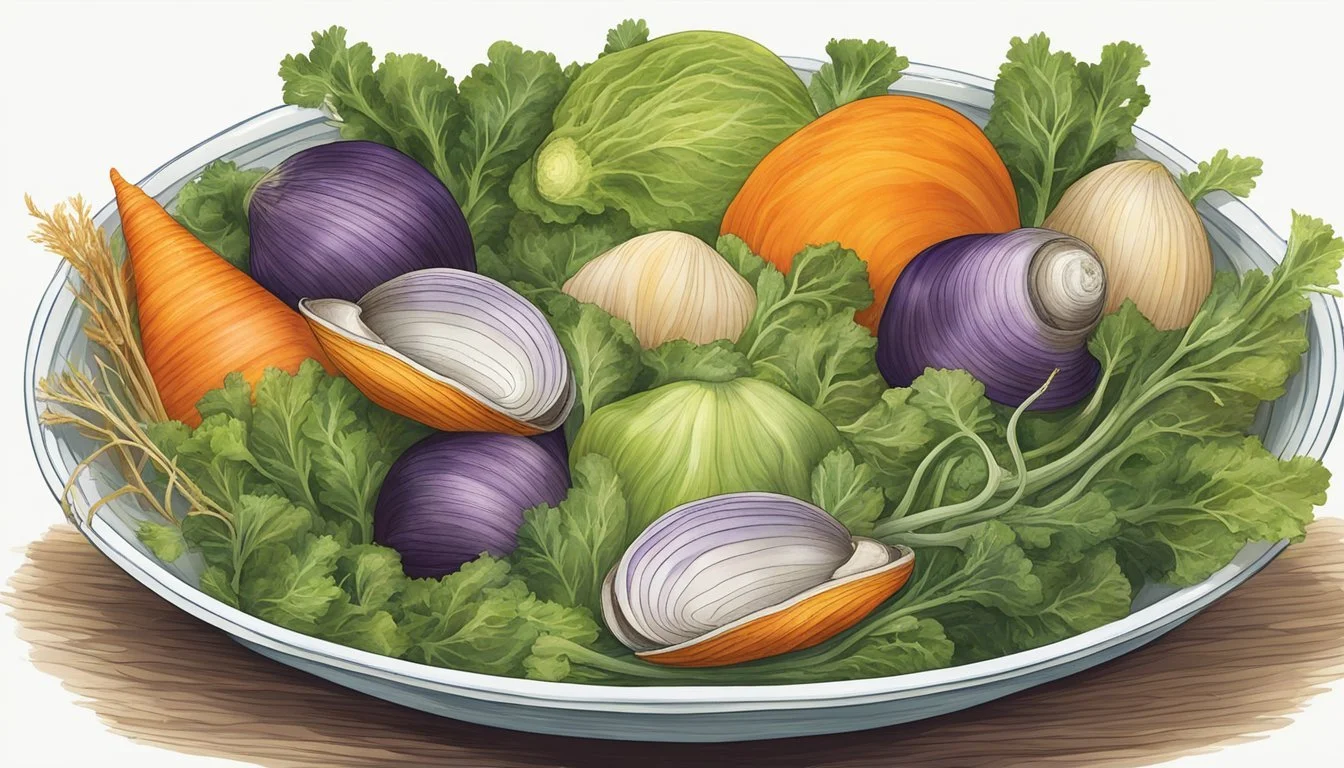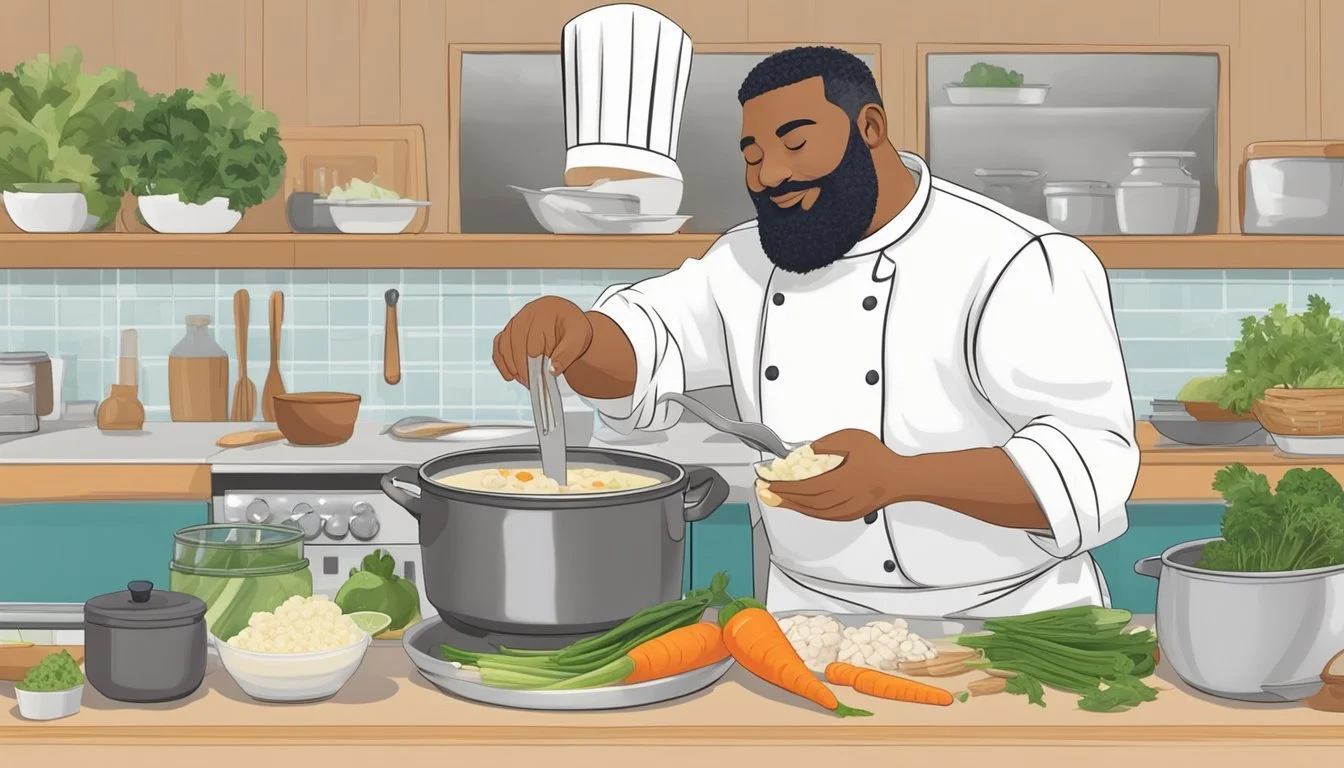Clams Substitutes
Best Alternatives for Seafood Dishes
Whether you're preparing a seafood dish or experimenting with new flavors in your kitchen, finding the right clam substitute can save your recipe. Squid, for instance, offers a mild and slightly sweet taste that can mirror the brininess of clams, making it a great swap. For those who are seeking plant-based options, oyster mushrooms are a favorite, providing a rich, earthy flavor that mimics clams' depth without the seafood component.
Oysters also make a suitable alternative, bringing a distinct, earthy taste and a creamy texture which can be used in various dishes. In soups or sauces, fish stock enhanced with seaweed or vegetables can mimic the umami-rich base of clam broth, offering a similar savory profile. These substitutes ensure that the absence of clams doesn't compromise the deliciousness of your meal.
Understanding Clams
Clams are a type of shellfish known for their briny flavor and versatile culinary uses. This section explores the different varieties of clams, their taste and texture profiles, and how they are used in cooking.
Clam Varieties
Clams come in several varieties, each with distinct characteristics. The most common include Atlantic hard-shell clams (quahogs), soft-shell clams (steamers), and Manila clams.
Quahogs have a tough shell and are often used in chowders and baked dishes. Soft-shell clams, recognized by their brittle shells, are typically steamed. Manila clams are small, sweet, and commonly used in Asian cuisines. Each variety brings unique qualities to the table, affecting their preparation and culinary use.
Taste and Texture Profiles
The flavor of clams is often described as briny or oceanic. This distinct taste comes from their habitat in seawater. Clams also have a mildly sweet flavor that balances the brininess.
In terms of texture, clams can vary widely. They can be tender and juicy when lightly cooked but become chewy if overcooked. Fresh clams have a firm and slightly elastic texture, which many seafood enthusiasts appreciate. Understanding these taste and texture elements helps in choosing the right clam variety for specific dishes.
Culinary Uses
Clams have numerous culinary applications, making them a staple in many seafood recipes. They are often used in soups like clam chowder, where their briny flavor enriches the broth.
Clams are also enjoyed steamed, grilled, or baked. Steaming is a common method, especially for soft-shell clams, while quahogs are ideal for baking. Their juices, known as clam liquor, are perfect for enhancing sauces and soups. Clams can also be incorporated into pasta dishes, adding a rich sea essence.
In summary, clams provide diverse options for chefs and home cooks alike, bringing a unique and flavorful touch to a variety of dishes.
Clam Substitutes Overview
Clam substitutes are chosen for various reasons, including dietary preferences, allergies, and sustainability concerns. Ideal substitutes should closely mimic the taste and texture of clams and fit specific dietary needs such as vegan options.
Reasons for Substituting Clams
One major reason to substitute clams is allergies. Many people are allergic to shellfish and need alternatives to avoid adverse reactions. Additionally, dietary preferences, like veganism, necessitate plant-based substitutes.
Sustainability is another growing concern. Overfishing and environmental impact lead some to seek more sustainable options that are less harmful to marine ecosystems. Availability can also be an issue; clams may not be readily available everywhere, necessitating accessible substitutes.
Desired Qualities in Substitutes
An ideal substitute should replicate the taste and texture of clams. For the taste, umami-rich ingredients are preferred to mimic the savory profile of clams. Oysters and oyster mushrooms are popular choices due to their briny or umami flavor.
Texture is equally important. Substitutes like oyster mushrooms provide a chewy texture close to that of clams, making them versatile in various recipes from chowder to pasta. For vegans, these mushrooms are suitable substitutes, offering both taste and texture. Using fish stock or seaweed can also help mimic the oceanic flavor in soups and broths.
Seafood-Based Substitutes
Seafood-based substitutes for clams offer a variety of flavors and textures. These alternatives can be incorporated into various dishes, providing a satisfying culinary experience without compromising taste.
Mussels and Oysters
Mussels and oysters are excellent clam substitutes. Both mollusks, they provide a similar briny taste that enhances seafood dishes.
Mussels bring a slightly sweet flavor and tender texture. They are easy to cook and integrate well into soups, stews, and pasta dishes.
Oysters have a creamier texture when cooked and offer an earthy, mineral taste. They work well in recipes that traditionally use clams, adding depth to the flavor profile.
Scallops and Shrimp
Scallops are a top choice for clam substitutes due to their sweet, succulent flavor. They share a similar texture with clams, making them suitable for various seafood-based dishes.
Shrimp also serve as a viable alternative. Their sweetness and firm texture complement many recipes, from chowders to salads. Shrimp and lobster can elevate mixed seafood dishes, adding a touch of luxury.
Alternative Fish Varieties
Several fish varieties can stand in for clams in seafood dishes. Lobster and octopus offer unique textures and rich flavors. These shellfish alternatives can transform any dish into a gourmet experience.
Tuna and salmon provide substantial omega-3 fatty acids, beneficial for health. They can be used in place of clams in various recipes, from pastas to grilled dishes, adding a different but satisfying flavor.
Using these seafood-based substitutes can enrich your culinary repertoire, ensuring delicious and healthful meals without the need for clams. Each option brings its distinctive benefits, making it easy to find the perfect match for your dish.
Vegetable-Based Substitutes
Vegetable-based substitutes for clams can offer a range of textures and flavors to suit plant-based and vegan diets. Using vegetables like mushrooms and other plant-based options can provide a satisfying experience in clam-like dishes without compromising on taste.
Mushroom Varieties
Mushrooms can be excellent substitutes due to their meaty texture. Oyster mushrooms and king oyster mushrooms are especially effective, as they replicate the chewy consistency of clams when cooked. Cremini mushrooms and shiitake mushrooms also offer a robust flavor and texture, enriching dishes with their earthy notes.
In broth-based recipes, mushrooms absorb flavors well, making them an ideal choice. Their natural umami enhances the dish, providing depth similar to the briny taste of clams.
Additional Vegetable Sources
Other vegetables can also serve as clam substitutes. Hearts of palm have a firm, slightly sweeter texture that works well in a variety of dishes. Jackfruit is another versatile option, offering a fibrous, meaty texture suitable for soups and stews.
For those seeking a creamy yet plant-based option, potatoes and cauliflower can be used. These vegetables can be blended into chowders to create a rich, satisfying base. Using these ingredients ensures the dish remains creamy and hearty while being vegan-friendly.
Legume and Grain Substitutes
When looking for substitutes for clams in various recipes, legumes and grains offer excellent alternatives. These ingredients can capture some of the rich taste and texture that clams provide, making them suitable for various cooking applications.
Chickpeas and Beans
Chickpeas are a popular substitute due to their meaty texture and rich taste. They can be used in soups, stews, and even baking. Chickpeas provide a firm bite and absorb flavors well, making them versatile in many dishes.
White beans, such as cannellini or great northern beans, have a milder taste but offer a creamy texture when cooked. They work well in chowders and casseroles where a subtle yet satisfying element is needed. White beans can mimic the soft, almost chewy quality of clams, especially in well-seasoned recipes, enhancing both texture and flavor.
Vegan and Plant-Based Alternatives
When adopting a vegan diet, finding substitutes for clams can be challenging. This section covers commercially available vegan seafood products and methods for mimicking clam flavors using plant-based ingredients.
Vegan Seafood Products
There are multiple store-bought options available for those seeking vegan clam substitutes. Products from brands like Gardein offer alternatives such as crabless cakes, which can serve as a substitute in recipes calling for clams.
For those seeking a versatile vegan clam substitute, tofu and tempeh are reliable options. These soy-based products can be marinated and seasoned to replicate the texture and flavor of clams. Additionally, textured vegetable protein (TVP) and mushrooms can provide the chewy texture often associated with clams.
Vegan clam chowder recipes often incorporate a mix of tofu and mushrooms to achieve a similar consistency and flavor profile. Lastly, vegan fish sauce, often made with seaweed and mushroom extracts, can enhance the umami flavor in dishes traditionally calling for clams.
Creating Vegan Clam Flavors
Achieving clam-like flavors in vegan dishes involves a combination of specific seasonings and ingredients. Seaweed is a critical component as it imparts a briny, ocean-like taste. Varieties such as nori, dulse, and kombu are commonly used.
Soy sauce or tamari, blended with mushroom or oyster mushroom broth, can create a deep, savory flavor similar to clam broth. Adding nutritional yeast can also provide a cheesy, umami boost to vegan clam chowder and other seafood-inspired dishes.
Plant-based cooks often use lemon juice and vinegar to add acidity and brightness, enhancing the overall flavor and mimicking the freshness of clams. By combining these ingredients, home cooks can create rich and satisfying vegan alternatives to traditional clam-based recipes.
Enhancing Flavor and Texture
When substituting clams, selecting the right flavorings and cooking methods can significantly improve the final dish's taste and texture. These techniques ensure that the substitute offers a pleasing culinary experience.
Seasonings and Spices
Garlic and onion are fundamental in enhancing substitutes' flavors, providing a robust base for any seafood dish. Fresh parsley and celery add a refreshing herbal quality.
Incorporating white wine can introduce a sophisticated depth, while a splash of vinegar or lemon juice brightens the dish, mimicking the natural brininess of clams.
A dash of pepper can add a subtle kick, and for added umami, consider using miso paste or soy sauce. These elements layer well, creating a rich, complex flavor profile.
Cooking Techniques
Different cooking methods can alter both the flavor and texture of clam substitutes. Steaming is gentle and helps retain moisture, ensuring a tender and juicy result.
Grilling introduces a smoky note, excellent for hearty recipes. Baking with breadcrumbs or herbs can add a delightful crunch, suitable for dishes like stuffed mushrooms.
Layering these techniques with the right herbs and spices ensures the substitute not only satisfies the palate but also achieves a texture close to that of clams.
Adapting Recipes to Substitutes
When swapping out clams in recipes, the focus should be on maintaining texture and flavor. Options like scallops, squid, and oyster mushrooms can offer similar qualities. Adapting traditional dishes to these substitutes can result in unique and delicious variations.
Clam Chowder Variations
Scallops can effectively replace clams in traditional chowder. Their sweet and succulent texture works well with heavy cream and potatoes.
When using squid, cut it into rings to mimic the bite-sized pieces of clams. Old Bay seasoning and fresh parsley enhance the flavor.
For a vegan alternative, oyster mushrooms are a great choice, offering a chewy texture. They combine well with vegetable broth and coconut milk to achieve a creamy consistency.
International Cuisine Adaptations
Seafood stews from different cuisines can easily be adapted. In Italian cioppino, mussels or squid can replace clams. Both options bring a briny taste that complements tomato-based sauces.
Using shrimp in a Spanish paella adds a similar textural element as clams. It's important to adjust cooking times for shrimp to avoid overcooking.
For Asian dishes, such as Japanese miso soup, try using scallops or diced tofu as substitutes. Both absorb the flavors of dashi and miso well, creating a satisfying umami profile.
Clam Bake and Other Classics
In a classic clam bake, where fresh clams are steamed with other seafood and vegetables, shrimp or mussels can serve as excellent substitutes. Both provide a similar bivalve mollusk experience with minimal adjustment.
For steamed clams without wine, using squid ensures the briny flavor remains intact. Cooking in a dutch oven with garlic and herbs preserves the traditional essence.
When adapting classics like linguine with clam sauce, try using lobster or oyster mushrooms. Lobster adds a touch of elegance, while oyster mushrooms provide a satisfying depth to the sauce.










